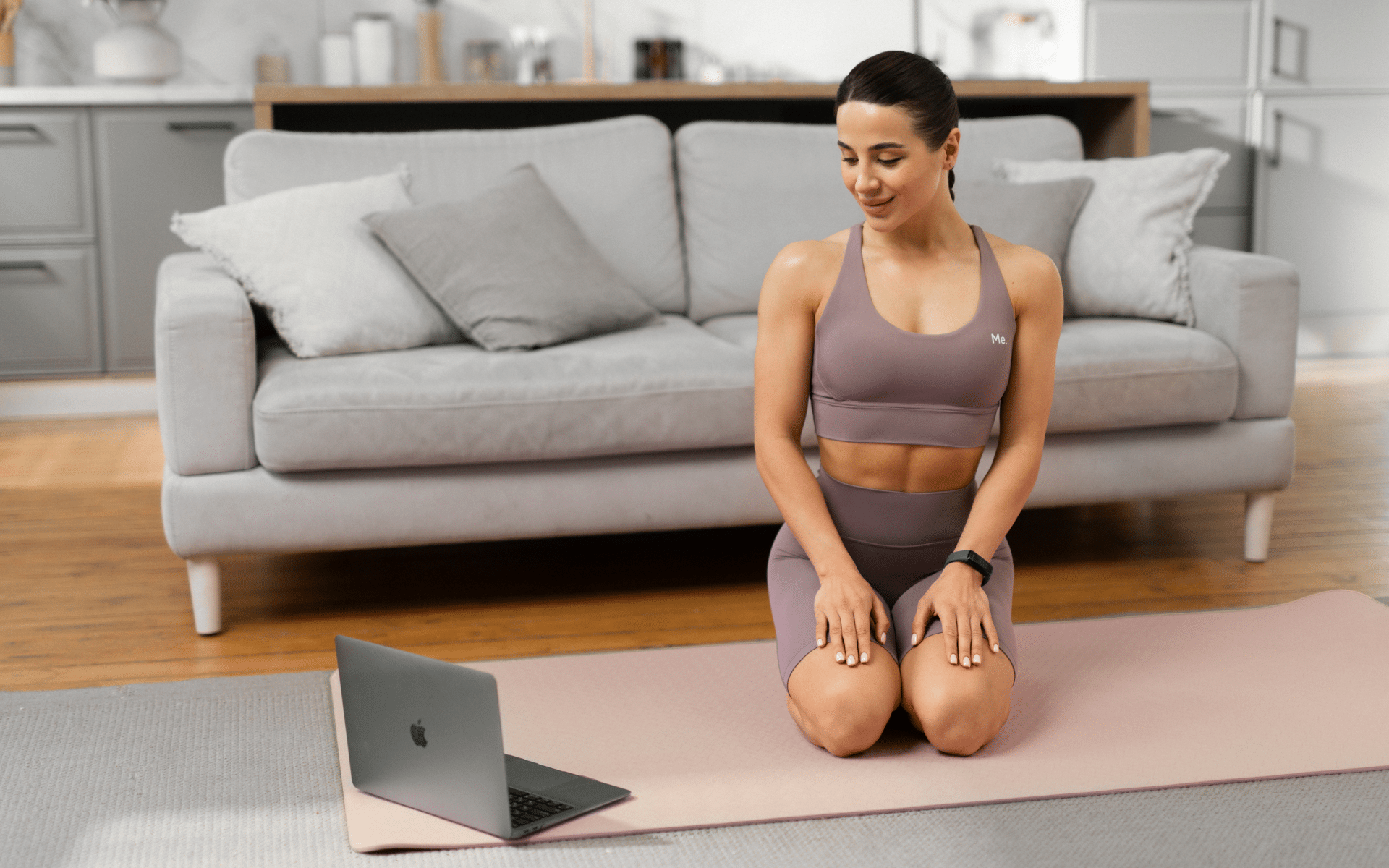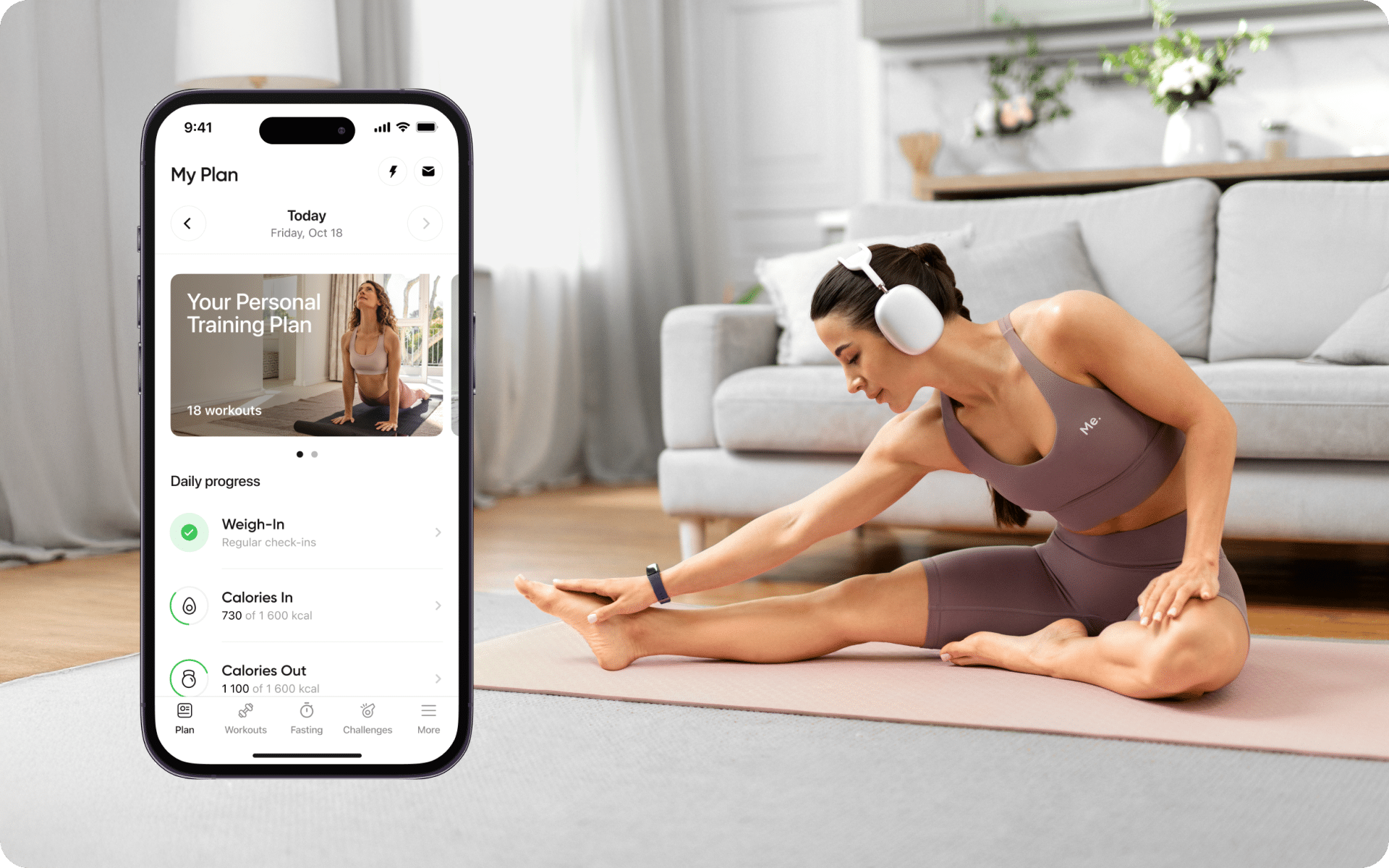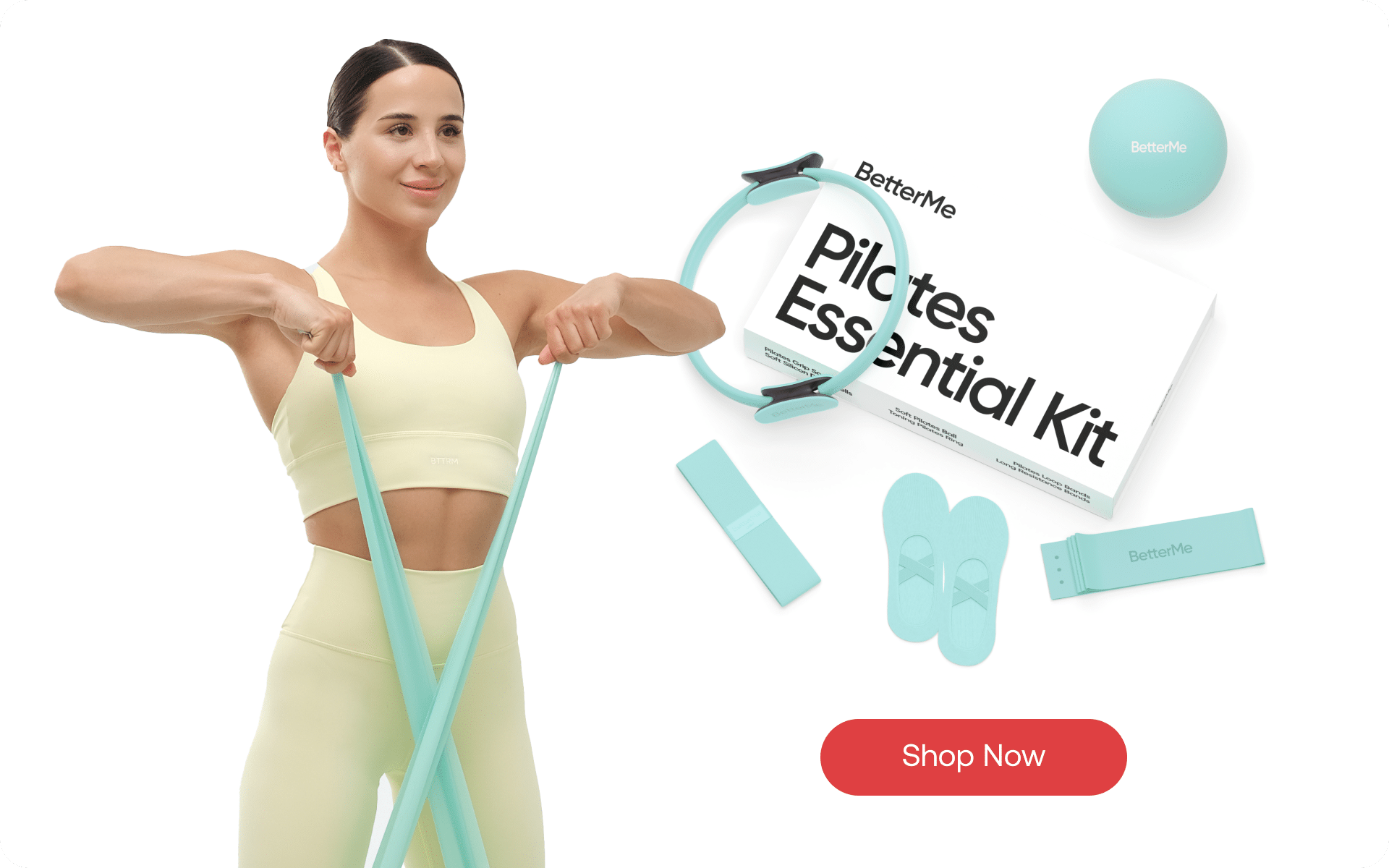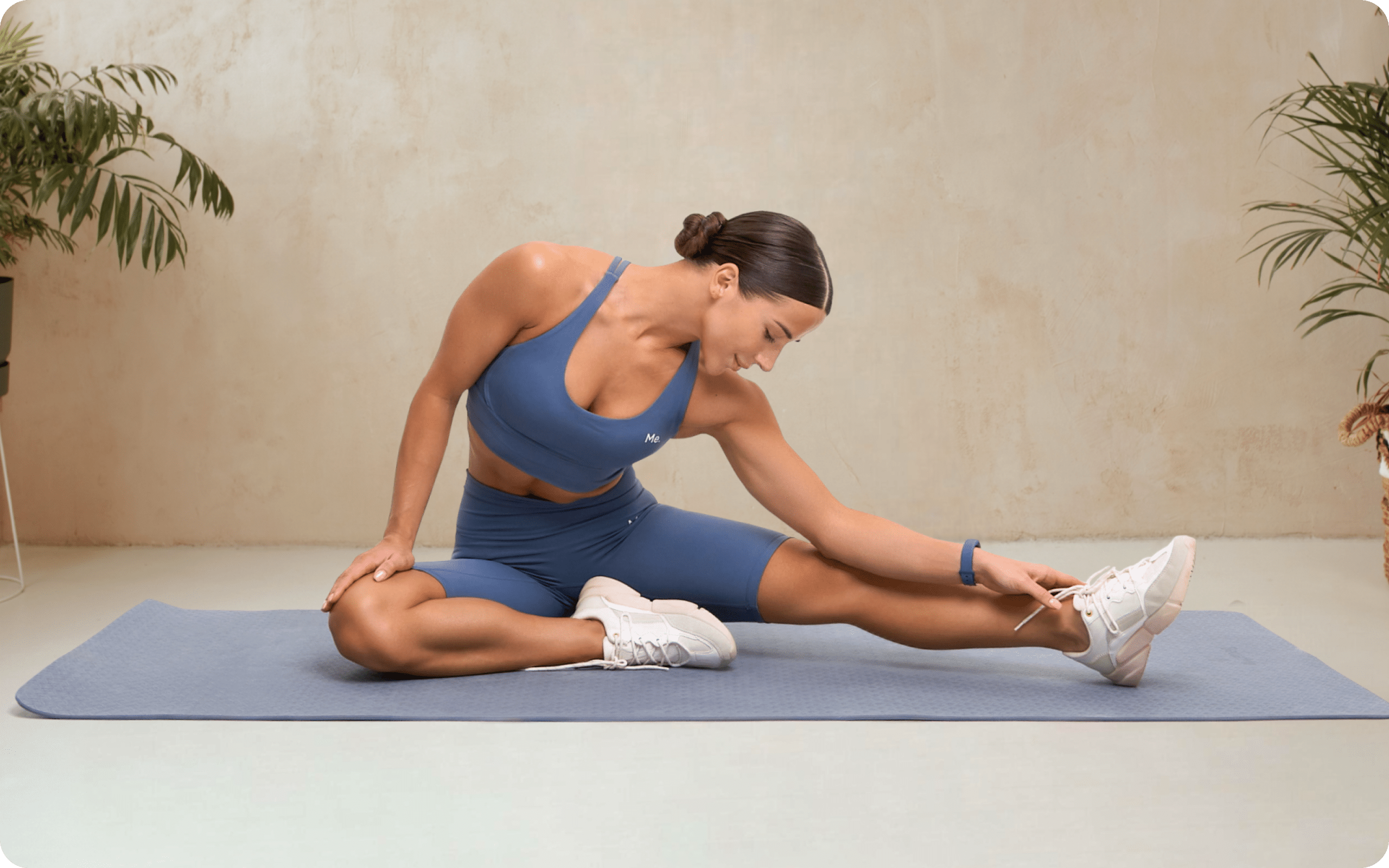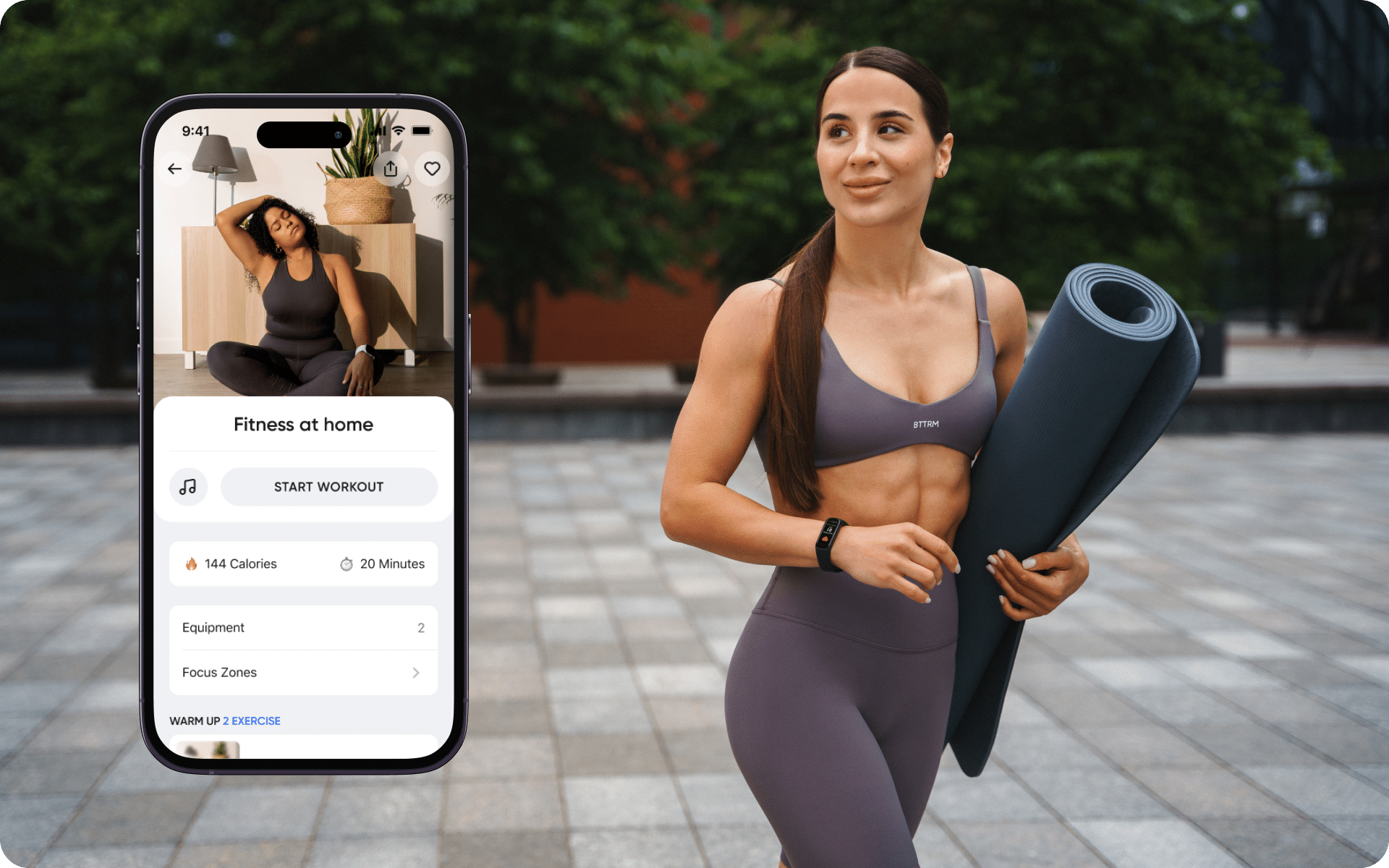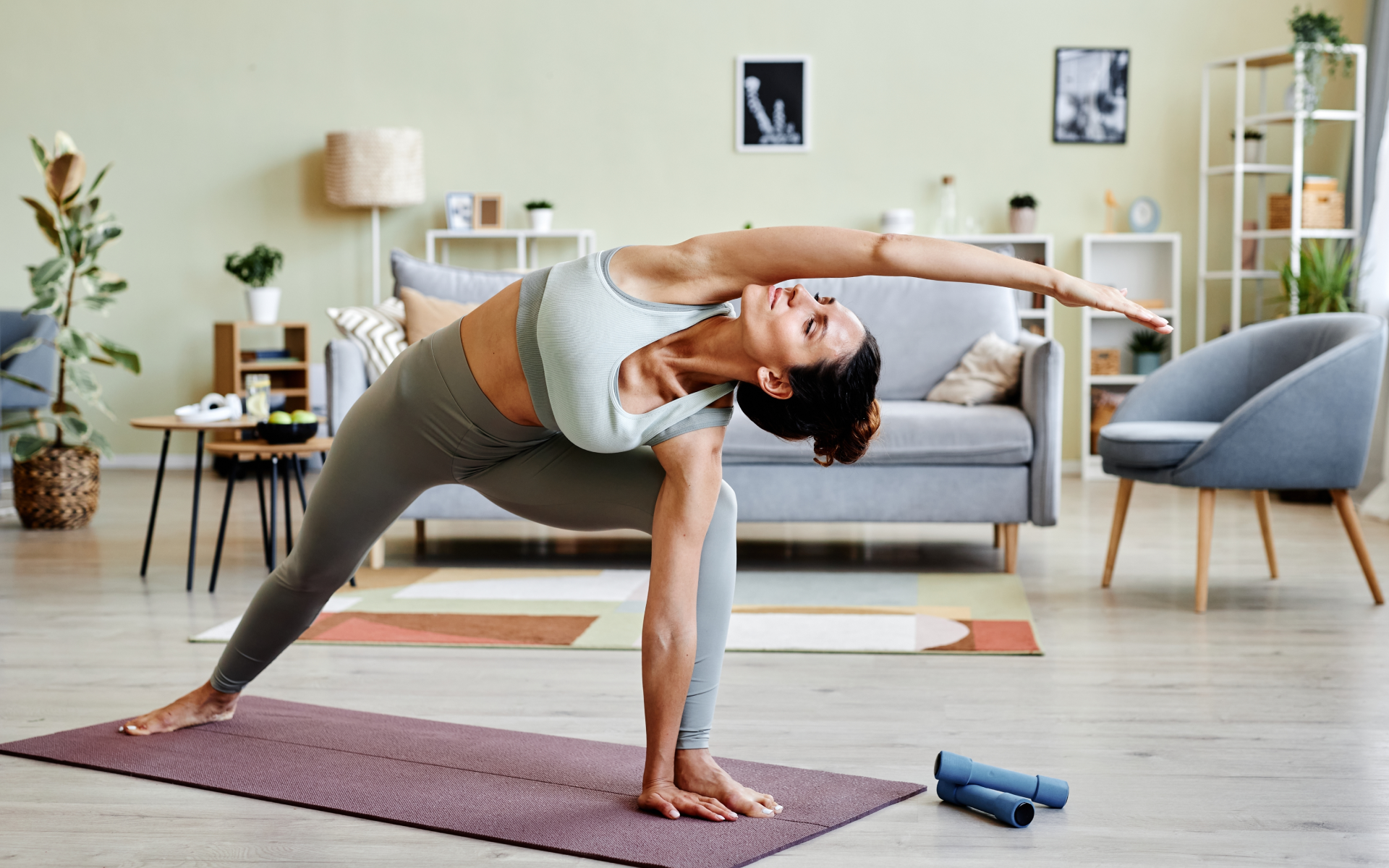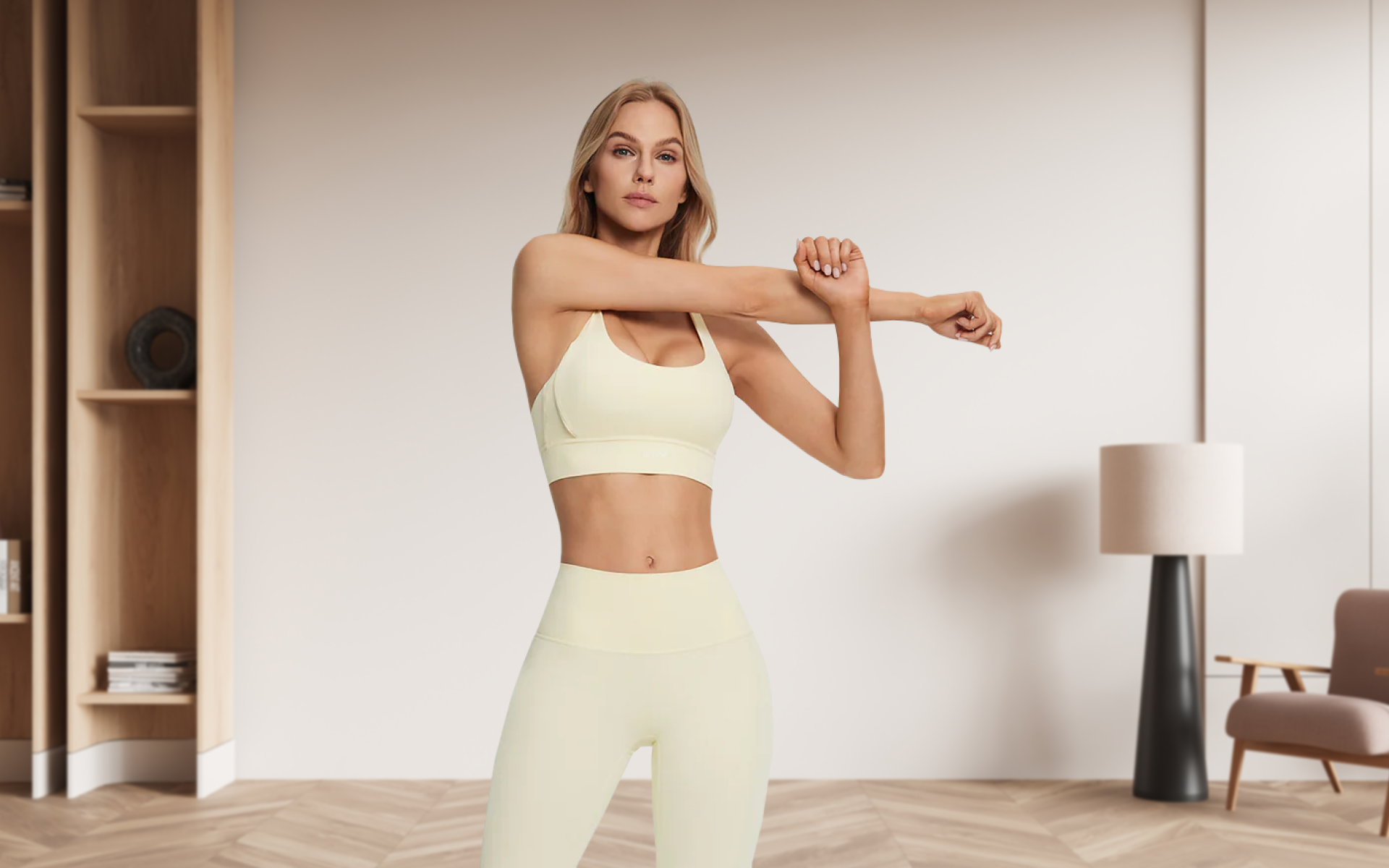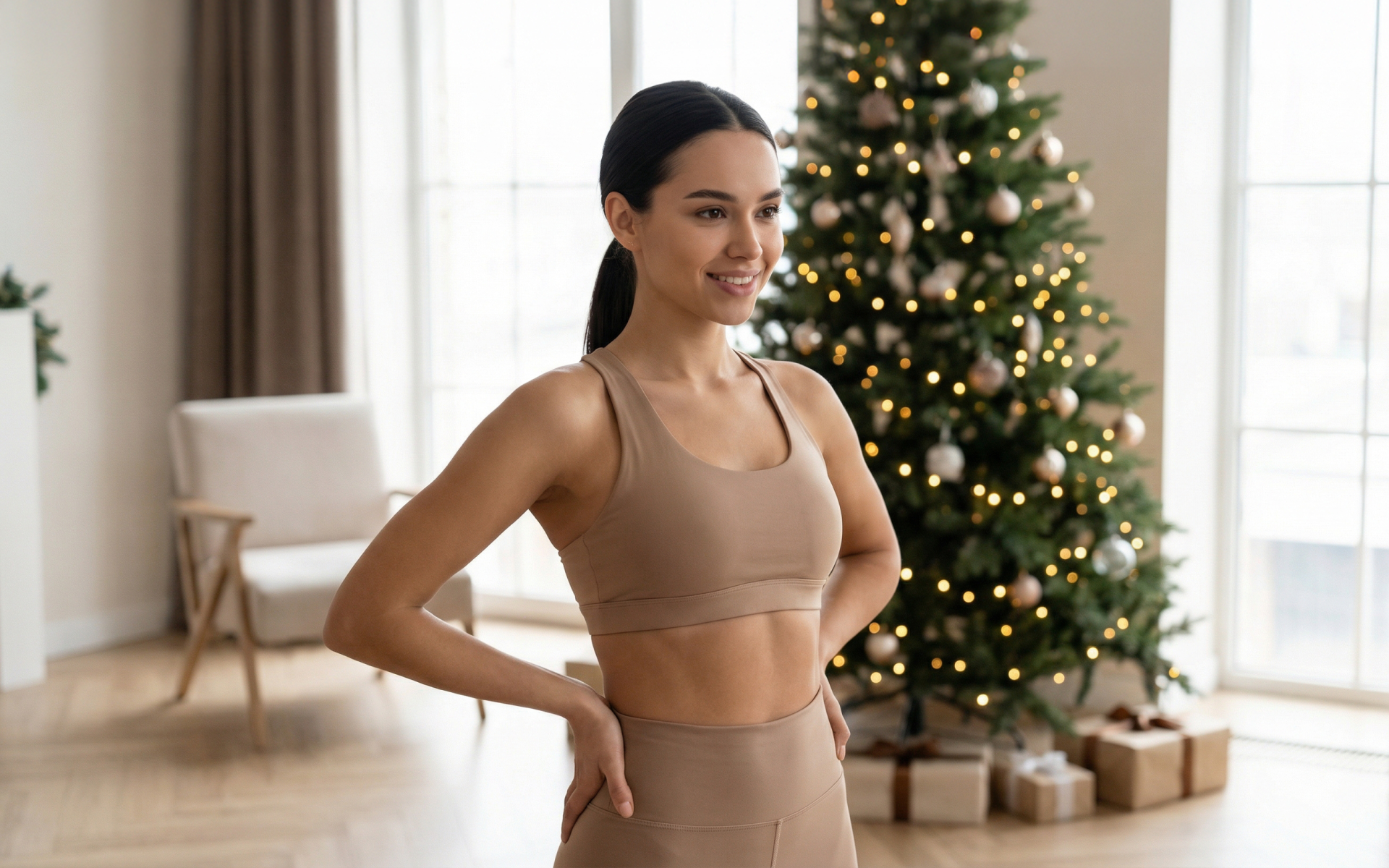Both Yoga and Pilates have had their time in the sun. Yoga, with its ancient roots, paints a picture of serene practitioners on mats facing the morning sun, engaging in poses that align body and mind. Over the years though, it has evolved into various forms, reflecting a blend of spiritual and physical practice (9).
Pilates caught on in the early 20th century, promising a lean, sculpted body through controlled movements and core strengthening (13).
If you’ve watched these trends or considered joining a class, you may wonder if there’s a difference between the two. Both promise flexibility, strength, and mindfulness, but some differences may sway your decision.
Here’s what you need to know to make an informed decision.
The Difference in Origins
Although both practices have a rich and extensive history, the origins of Yoga and Pilates are quite different.
Yoga has its roots in ancient India, with some scholars dating back to over 5,000 years ago. It was originally developed as a spiritual practice that seeks to unify mind, body, and spirit through various breathing techniques, meditation, and physical postures (9).
Pilates, on the other hand, was developed in the early 20th century by Joseph Pilates. It started as a rehabilitative exercise for soldiers during World War I and later evolved into a full-body workout that emphasizes core strength and stability (13).
The Difference in Focus
While both Yoga and Pilates focus on mind-body connection and overall wellness, they differ in their core focus.
Yoga typically centers on breathing techniques and meditation, with physical postures being a means to reach a meditative state. It also incorporates spiritual aspects such as chanting and mantras.
Pilates, on the other hand, has a more physical focus with an emphasis on strengthening the core muscles through controlled movements. The goal is to improve overall physical strength, balance, and flexibility.
The Difference in Practice
Another key difference between Yoga and Pilates is the way they are practiced.
Yoga has a wide range of styles, from gentle Hatha to more intense Vinyasa or Power Yoga (1). It also includes various poses or asanas that are held for a certain period, allowing the practitioner to focus on their breathing and alignment (3) (9).
By contrast, Pilates has a more structured routine with specific movements and sets that are repeated for a certain number of repetitions. The focus is on precision, control, and fluidity of movement, rather than holding poses (14).
Does Pilates Use Yoga Poses?
No, Pilates does not use traditional yoga poses. While there are some movements in Pilates that may resemble yoga poses, they are designed with a different intention and not derived from yoga.
Pilates exercises focus on core strength, stability, and controlled movements, whereas yoga poses (asanas) are part of a broader practice that includes spiritual and meditative elements.
Here are some of the key differences between Pilates and yoga poses
Purpose:
Yoga Poses: Aim to achieve physical, mental, and spiritual balance.
Pilates Movements: Focus on strengthening the core, improving posture, and enhancing overall physical fitness.
Execution:
Yoga Poses: Held for longer periods, emphasizing breath control and relaxation.
Pilates Movements: Often involves continuous flow and repetition, focusing on precision and control.
Here are some examples of Pilates movements and how they differ from traditional yoga poses:
- Plank Position:
- Yoga: Used as part of sequences like Sun Salutations, focusing on breath and alignment.
- Pilates: Incorporated as an exercise to strengthen the core and improve stability.
- Bridge Pose:
- Yoga (Setu Bandhasana): A pose held for several breaths to open the chest and stretch the spine.
- Pilates (Shoulder Bridge): Performed with a focus on engaging the glutes and hamstrings, often with multiple repetitions.
So, while some Pilates exercises may look similar to yoga poses, they are not the same and serve different purposes. Pilates does not use traditional yoga poses as part of its practice.
BetterMe app will kick you out of the mental funk, shake off your extra weight, rid you off your energy-zapping habits, and help you sculpt the body of your dreams. Intrigued? Hurry up and change your life for the better!
The Difference In Breathing Techniques
Breath is an integral part of both Yoga and Pilates, but the techniques for breathing differ (18).
Yoga incorporates different breathing techniques such as Ujjayi breath, Kapalabhati breath, and Nadi Shodhana (alternate nostril breathing). These techniques are believed to help calm the mind, energize the body, and balance emotions (7).
Pilates, on the other hand, uses a specific breathing technique called “the Pilates breath.” This involves deep, lateral breathing that emphasizes exhalation as vital to proper inhalation (14).
How Is Pilates Breathing Different From Yoga?
Pilates breathing differs from yoga in several ways:
- Timing: In Pilates, the breath is closely linked to the movement and should be initiated before or at the start of a movement. In yoga, breath control may vary depending on the style and sequence.
- Direction: Pilates emphasizes lateral breathing into the ribcage, whereas yoga typically focuses on breathing into the belly (diaphragmatic breathing).
- Purpose: Pilates breath aims to engage and support the core, while yoga breath is often used to calm the mind and connect with the present moment.
The Difference in Equipment
One key distinction between Yoga and Pilates is the use of equipment.
Yoga primarily relies on a mat, while Pilates may involve various apparatus such as the reformer, Cadillac, or Wunda chair (14). These equipment provide resistance and support to help execute movements with more precision.
However, it’s worth noting that both practices can be done without any equipment. Many Pilates exercises can be modified to be performed on a mat or wall.here are also variations of yoga that involve the use of props like blocks or straps but these items are not needed for yoga either.
The Difference In Benefits
Both Yoga and Pilates offer numerous physical and mental benefits, but they differ in the specific areas they target.
Some of the main benefits of Yoga include (8):
- Improved flexibility and balance
- Stress relief and relaxation
- Enhanced mind-body connection and self-awareness
- Increased strength and endurance
On the other hand, some of the main benefits of Pilates include (13):
- Improved core strength, stability, and posture
- Better muscle control and coordination
- Increased body awareness and alignment
- Reduced risk of injury and improved physical performance in other activities or sports
It’s essential to note that both Yoga and Pilates can offer a combination of these benefits, but with different levels of emphasis.
Here’s what we mean:
- Flexibility: Both Yoga and Pilates can improve flexibility (18), but yoga may focus more on passive stretching and holding poses for longer periods, whereas Pilates incorporates dynamic stretches to increase range of motion.
- Strength: While both practices can enhance physical strength, Pilates has a stronger focus on specific muscle groups, particularly the core muscles (6).
- Mental Benefits: Both Yoga and Pilates can have a positive impact on mental well-being (5) (17). Yoga may offer more spiritual and meditative benefits, while Pilates can provide a sense of control, focus, and relaxation through precise movements.
Read more: Japanese Yoga: A Deep Dive Into Mindful Movements
Which Is Better, Pilates or Yoga?
Pilates is better for some purposes; Yoga is better for others. Both practices have unique characteristics and benefits. This means that it’s not a matter of which one is better, but rather which one suits your needs and preferences.
Below we list some scenarios where one practice may be more suitable than the other:
For Core Strength And Physical Fitness
Pilates is generally more effective in targeting specific muscles and improving overall physical performance. It’s also ideal for those seeking to strengthen their core and improve posture (2) (15).
For Stress Relief And Relaxation
Yoga’s focus on breath work, meditation, and mindfulness can make it more beneficial for managing stress and promoting relaxation. It’s also a better option for those looking to incorporate spiritual or philosophical aspects into their practice.
That said, exercise in general is known to reduce stress and release endorphins, so both practices are known to have a positive impact on mental well-being (16).
For Rehabilitation And Injury Prevention
Pilates is often recommended for rehabilitation purposes due to its focus on proper alignment, stability, and controlled movements. It can be an effective method for preventing and recovering from injuries, especially in the lower back and joints (11).
For Spiritual Growth Or Personal Development
Yoga’s incorporation of philosophy, spirituality, and self-awareness can make it a more suitable practice for those seeking inner growth (19).
Concepts such as mindfulness, non-attachment, and self-discovery are often integrated into the practice of Yoga. This helps to develop a deeper connection with oneself and the world around us.
For Cardiovascular Health
Pilates can offer a cardiovascular workout, particularly when performed on equipment like the reformer, which involves more dynamic and aerobic movements.
Some types of yoga, such as Vinyasa or Power Yoga, also have a more intense and fast-paced style that can provide cardiovascular benefits.
For Weight Loss
Both Pilates and yoga can aid in weight loss through their focus on movement and building lean muscle mass. However, it’s essential to consider that other factors such as diet and overall lifestyle play a significant role in weight management (20).
Lean and toned up body isn’t just a far-fetched fantasy. Check out the BetterMe app and watch it propel your weight loss journey into high gear!
FAQs
Can You Lose Belly Fat By Doing Pilates?
Pilates can help you increase your calorie expenditure, which is the primary factor in reducing belly fat. However, spot reduction (targeting specific areas for weight loss) is not possible through any form of exercise (4). As you lose fat in your overall body, the excess fat in your belly will also decrease.
Is Pilates Harder Than Yoga?
Whether or not Pilates is harder than yoga is a highly subjective matter. Both practices involve varying levels of difficulty, and it ultimately depends on the individual’s body and fitness level.
For example, someone with tight muscles may find yoga more challenging, whereas someone with less core strength might struggle more with Pilates.
Why Do People Prefer Pilates Over Yoga?
People may prefer Pilates over yoga for several reasons, such as its focus on specific muscle groups and controlled movements, which can provide faster results in terms of strength and physical fitness.
Additionally, some people may find Pilates to be more accessible or enjoyable due to its use of equipment.
Should I Do Yoga or Pilates First?
Starting with the gentlest yoga, stretches may help prepare your muscles for more intense Pilates movements.
That said, both practices can complement each other and be incorporated into a well-rounded fitness routine. It’s ultimately up to personal preference and what feels best for your body.
What Burns More Fat, Yoga or Pilates?
Different forms of Pilates and yoga can have varying levels of intensity, so it’s challenging to determine which one burns more fat.
Ultimately, the number of calories burned depends on the individual’s body weight, type of exercise and effort put into the exercises (10). Other factors like diet also play a significant role in weight loss (12).
The Bottom Line
Ultimately, the best way to determine whether Yoga or Pilates is right for you is by trying them out. Both practices have numerous benefits and can complement each other in a well-rounded fitness routine.
But it’s important to keep in mind that every individual is unique, and what works for one person may not work for another. So, consider your goals, preferences, and any physical limitations when deciding which practice to incorporate into your routine.
You may also find that you enjoy elements of both practices and choose to switch between them or combine them in your workouts.
DISCLAIMER:
This article is intended for general informational purposes only and does not serve to address individual circumstances. It is not a substitute for professional advice or help and should not be relied on for making any kind of decision-making. Any action taken as a direct or indirect result of the information in this article is entirely at your own risk and is your sole responsibility.
BetterMe, its content staff, and its medical advisors accept no responsibility for inaccuracies, errors, misstatements, inconsistencies, or omissions and specifically disclaim any liability, loss or risk, personal, professional or otherwise, which may be incurred as a consequence, directly or indirectly, of the use and/or application of any content.
You should always seek the advice of your physician or other qualified health provider with any questions you may have regarding a medical condition or your specific situation. Never disregard professional medical advice or delay seeking it because of BetterMe content. If you suspect or think you may have a medical emergency, call your doctor.
SOURCES:
- A Comparison of the Acute Effects of Different Forms of Yoga on Physiological and Psychological Stress: A Pilot Study (2020, ncbi.nlm.nih.gov)
- An online pilates exercise program is effective on proprioception and core muscle endurance in a randomized controlled trial (2022, ncbi.nlm.nih.gov)
- A Physician’s Guide to Recommending Yoga (2018, ncbi.nlm.nih.gov)
- A proposed model to test the hypothesis of exercise-induced localized fat reduction (spot reduction), including a systematic review with meta-analysis (2022, researchgate.net)
- Effect of yoga on different aspects of mental health (2012, pubmed.ncbi.nlm.nih.gov)
- Effects of a Pilates exercise program on muscle strength, postural control and body composition: results from a pilot study in a group of post-menopausal women (2015, ncbi.nlm.nih.gov)
- Effects of yogic breath regulation: A narrative review of scientific evidence (2019, ncbi.nlm.nih.gov)
- Exploring the therapeutic effects of yoga and its ability to increase quality of life (2011, ncbi.nlm.nih.gov)
- History, philosophy/concept, techniques of yoga and its effects on various systems of the body (2020, journals.lww.com)
- How Many Calories Do I Burn in a Day? (2024, webmd.com)
- Is Pilates an effective rehabilitation tool? A systematic review (2018, pubmed.ncbi.nlm.nih.gov)
- Optimal Diet Strategies for Weight Loss and Weight Loss Maintenance (2021, ncbi.nlm.nih.gov)
- Pilates: how does it work and who needs it? (2011, ncbi.nlm.nih.gov)
- Pilates (2011, ncbi.nlm.nih.gov)
- Pilates for Improvement of Muscle Endurance, Flexibility, Balance, and Posture (2010, journals.lww.com)
- Role of Physical Activity on Mental Health and Well-Being: A Review (2023, ncbi.nlm.nih.gov)
- The effects of pilates on mental health outcomes: A meta-analysis of controlled trials (2018, pubmed.ncbi.nlm.nih.gov)
- The Impacts of Pilates and Yoga on Health-Promoting Behaviors and Subjective Health Status (2021, ncbi.nlm.nih.gov)
- The Relationship Between Yoga and Spirituality: A Systematic Review of Empirical Research (2021, frontiersin.org)
- Tips for Maintaining Healthy Weight (2023, cdc.gov)
